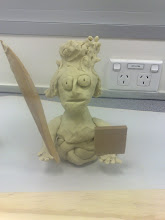"Every object tells a story, if you know how to read it" -Henry Ford
Objectified really opened my eyes to now view industrial design in a COMPLETELY new perspective. It reignited my passion in some ways showing me that there is so much more to design than just a uni course that I'm taking.
Andrew Blauvelt summarizes the phases of modern design in 3 steps. The first and most influential form of design is to design through form. A designers job in its essence is to give o product its form. To give it a reason for the product to look how it is meant to look. It might seem as an easy concept, but it actually requires a designer to think about the form of the design very thoroughly as every curve, every edge, every line gives a different meaning to the product.
Andrew continues on his thoughts of modern design by stating another phase of modern design being the symbolism which derives from a particular design. This means that the design of the product takes into consideration of things such as the cultural context the design might symbolize. This notion of symbolism then leads into the last phase of design that Andrew talks about, being the contextual aspects of design. An example would be to take the human-object relationship of a design into consideration.
Dieter Rams, a former design director for Braun lists what he thinks design should be during his segment in the video. Some of the most notable ones to me include his thoughts that good design is aesthetic design, is consistent in every detail, should be innovative and lastly, good design should be as little design as possible. Dieter really does a great job by summarizing what he thinks good design is and should be. It provides sort of a guideline that can be applied to our own process of design. He's calm and systematic approach to design really pushed me into wanting to implement this sort of mentality into my design process. After all, one isn't hired to be design director for one of the foremost design directed companies for doing a half-arsed job!
Another phrase That Rob Walker, a columnist and writer on design used in the video, was stating that designers strive in making products 0r designs that look 'now', look like products designed 'then', in order to have them purchase the 'new now' designs. I see this as a very bold and truthful statement in our current culture. People will always have a want for new things even though they own products that still perform tasks that they require. Humans have a need to follow current trends and purchase or replace their older products just because the products in which they own, are now viewed to be 'old'. But ironically enough, the video is summed up by Rob when he says that 'you keep products that tell the story of you'. How interesting that our culture has brought us up to constantly replace products we buy, but still, we as consumers, insist on keeping our old products for the memories that they can give us.
Subscribe to:
Post Comments (Atom)

No comments:
Post a Comment